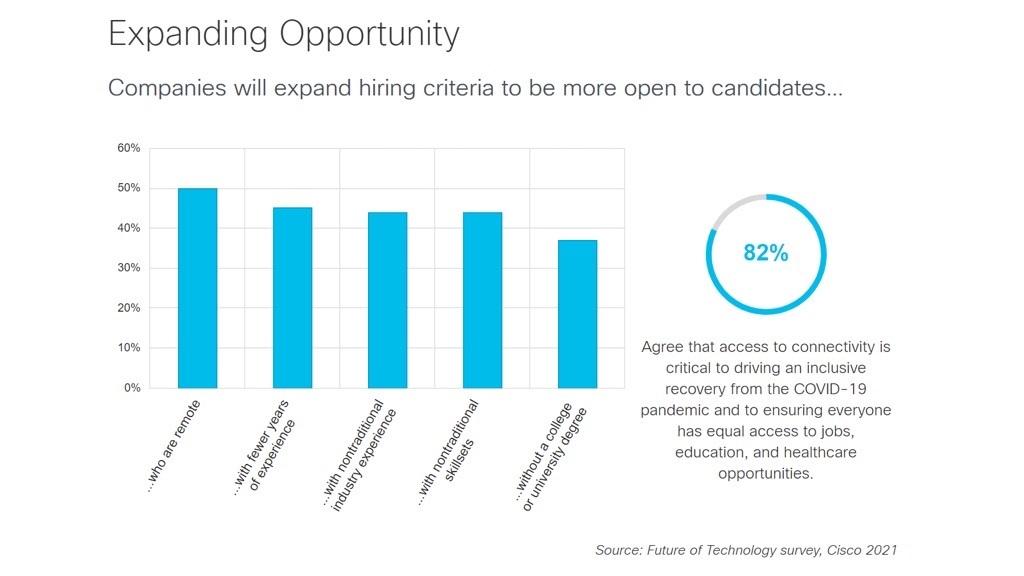Leadership best practices in a hybrid environment
- Details
- Written by Aditi Singh Kalra
- Category: Leadership
-

More than 4 out 5 (86%) companies want to expand their hiring criteria in the next 2 years. This is just one way leaders are evolving.
The latest edition Hybrid Work Index derived from data on Ciscos platform, 64% of respondents said that the decision to “work from anywhere vs. coming into the office” directly affects whether to stay or to leave a job.
This was broken down into regional findings which include the APJC region (Asia Pacific Japan and China), which were the return to office preferences cited.
- Global data: Only 19% of respondents cited spending more than three days at work as a post-pandemic reality.
- Americas data: Only 15% of respondents cited 3+ days spent in the office as a post pandemic reality
- APJC Data – More than one-fourth (28%) of respondents – and the highest worldwide – cited the need to spend 3+ days at work as a post-pandemic fact.
- EMEAR (Europe, Middle East, Africa, and Russia) data – One in five (20%) see themselves spending 3+ days in the office as a post-pandemic reality
Evidently, the pandemic has changed the way people work. Before the pandemic, more than three days per week was the norm.
Expanded hiring criteria for job candidates
This edition of the Index also found that 86% of companies anticipate they will expand their hiring criteria for job candidates in the next two years.
As such, the following are the changes expected to hiring criteria:
- 50% will seek remote workers.
- 45% might consider workers with less experience,
- 44% of respondents are open to candidates with non-traditional work experience.
- 44% are open to considering people with non-traditional skills.
- 37% are open to meeting people without a college degree.
Leaders in a hybrid environment: Best practices
The Index outlined some practices that may prove to be effective for leaders working in a mixed environment.
- Listen to your employees to make sure they are happy You’re creating hybrid work arrangements that are based on their strengthsTake their preferences into consideration and allow the work to be done in a safe, secure and seamless manner.
- Your leaders should be empowered to take chargeYou can guide your team to more inclusive and collaborative workplace experiences. To help your team thrive in a hybrid model of work, incorporate people-driven practices, team rituals and behaviors.
- Leaders must learn and practice leadership New craft of inclusion and engagement:
- Answer questions to clarify tasks.
- To better assign work based upon strengths, be proximate and listen.
- Recognize excellence in work.
- Each individual’s growth potential should be taken into consideration
- Transparency and trust should be raisedYour teams and the whole organisation can benefit from your strengths.
According to the report, leaders who are close to their team members and are available to them are more likely to understand their individual circumstances and preferences. This allows for curated hybrid configurations that can play to each employee’s strengths while also being attentive to their wellbeing.
Image / Cisco
Follow us on Telegram and on Instagram @humanresourcesonline for all the latest HR and manpower news from around the region!


